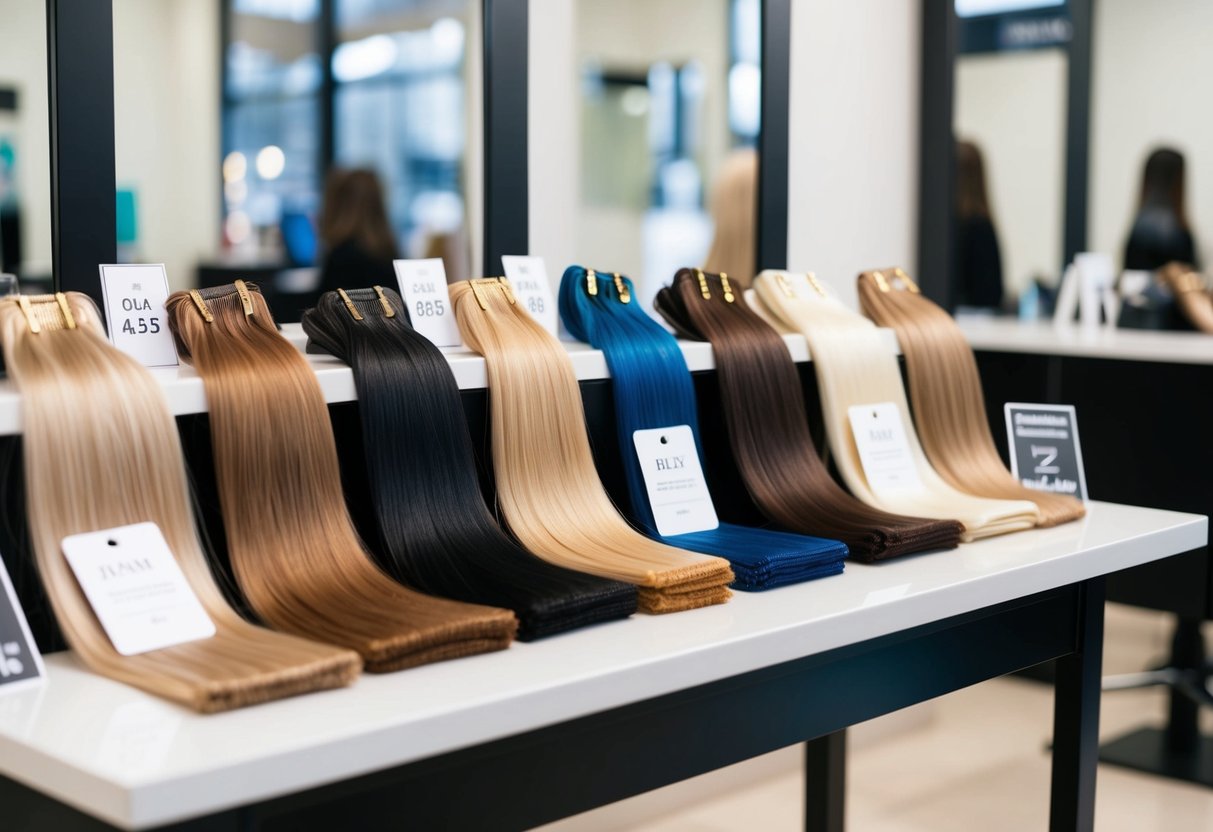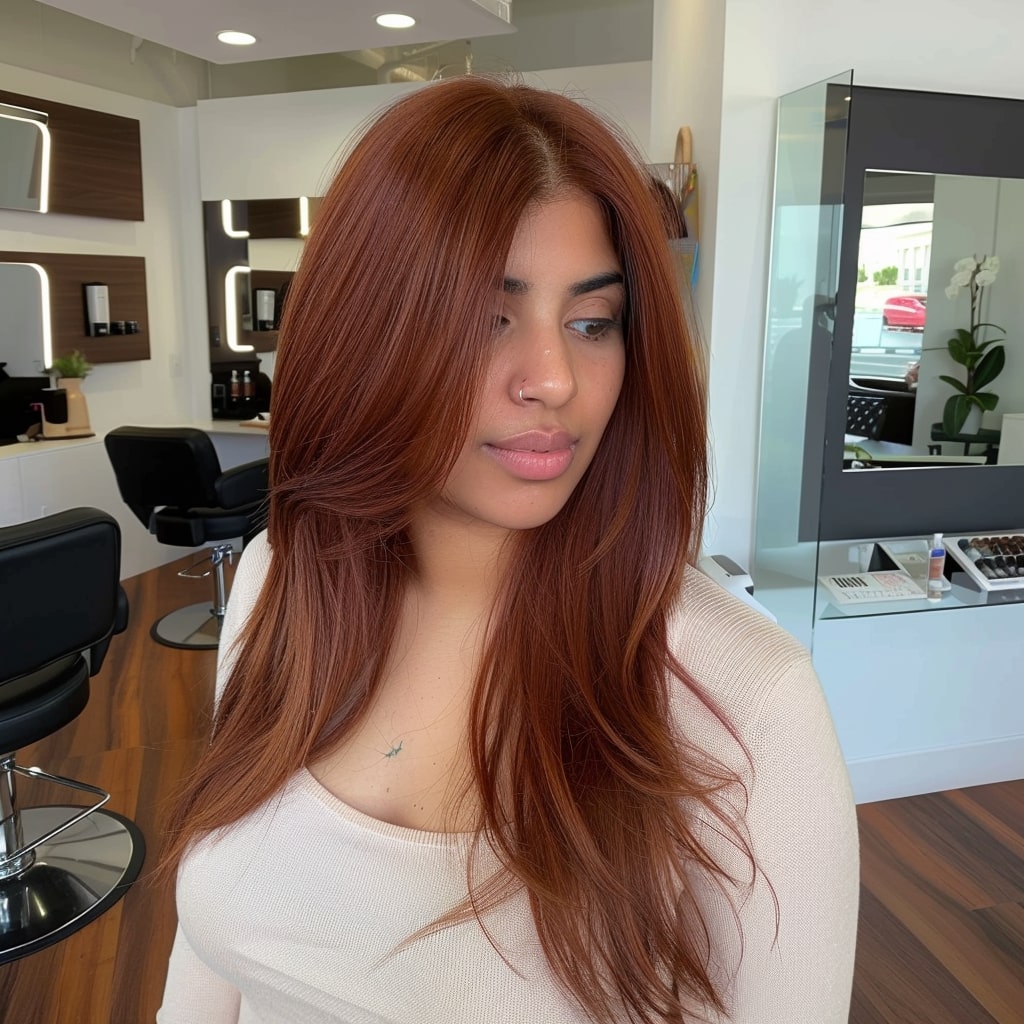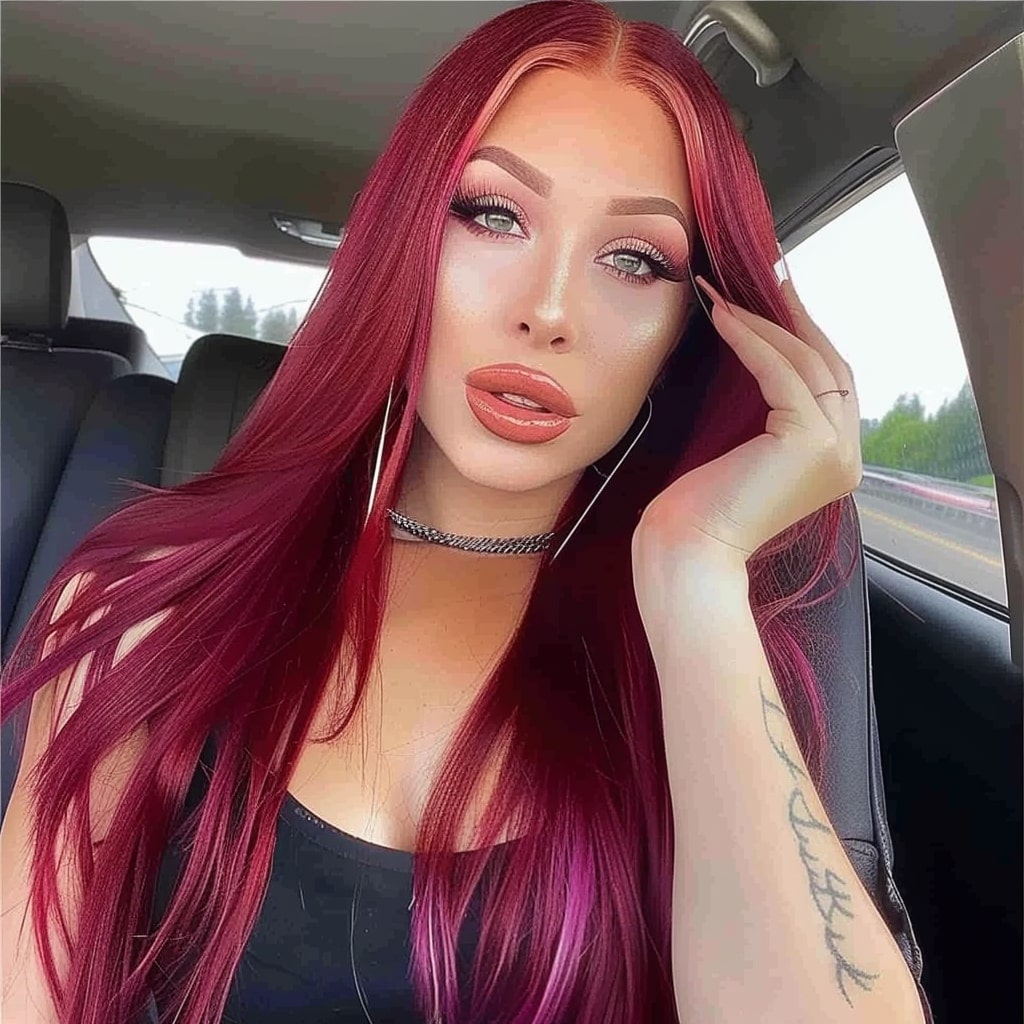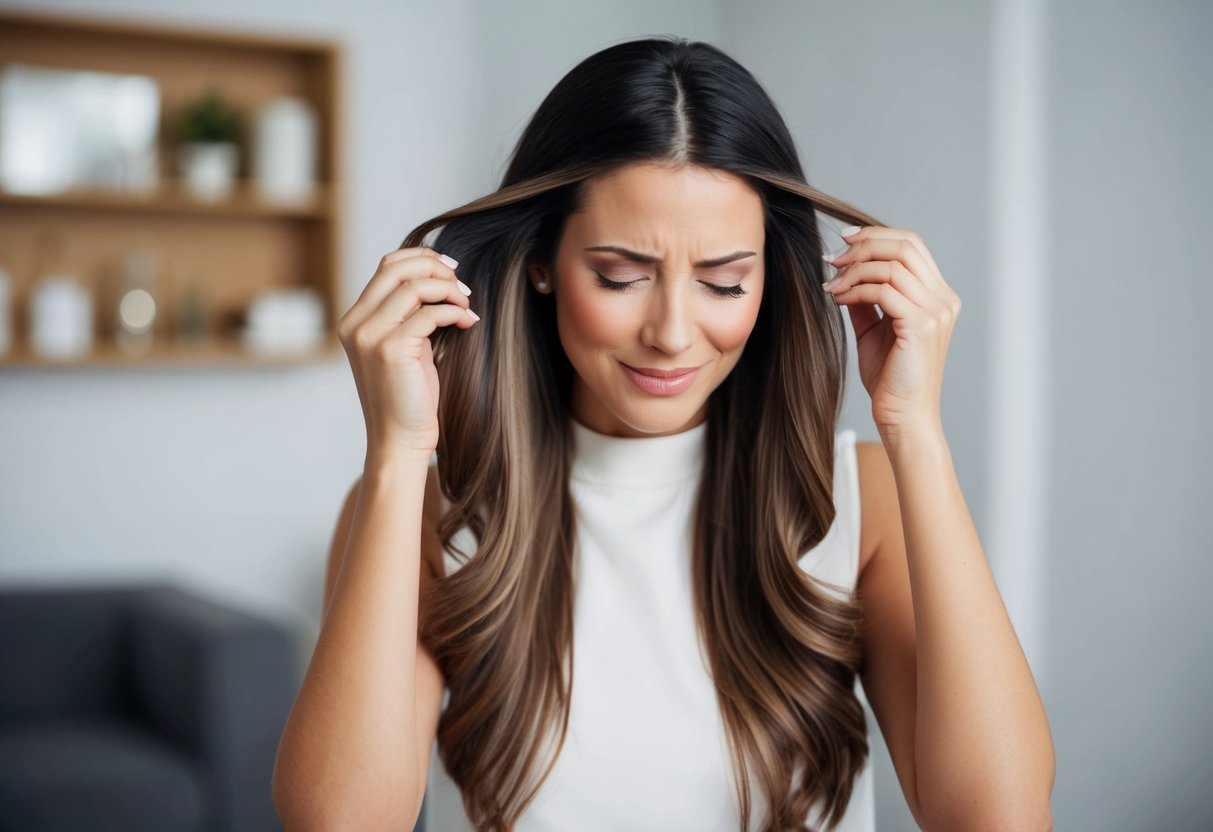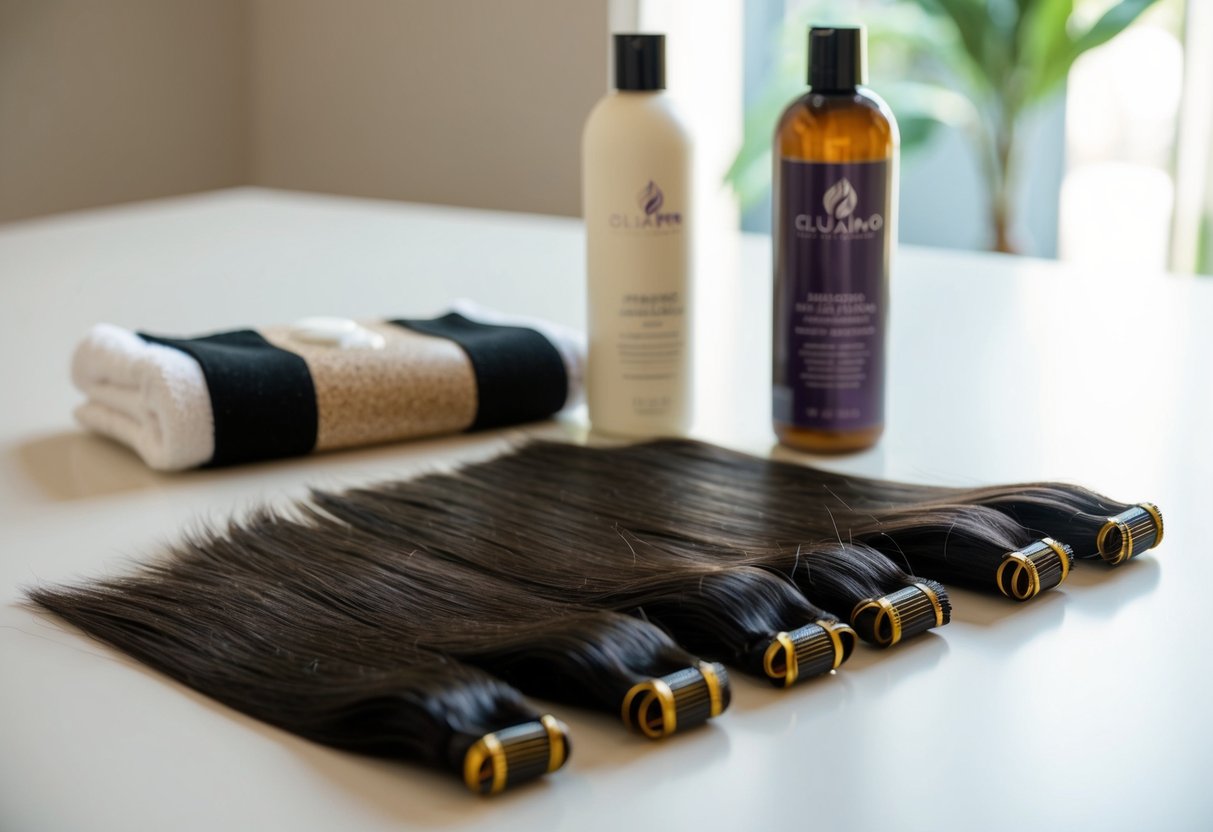What Are My Hair Extensions Shedding So Much: Causes and Solutions

Are you frustrated with your hair extensions shedding more than expected? It's a common issue that many people face. Hair extensions shed due to improper care, low-quality hair, or rough handling during washing and brushing. Understanding the reasons behind this problem and adopting the right techniques can help you keep your extensions looking fabulous for longer.
One major cause of hair extensions shedding is the way you handle them. When washing, always be gentle. Use sulfate-free and alcohol-free products and avoid pulling or tugging at the hair. Remember, hair is at its weakest when wet, so take extra care to prevent unnecessary shedding.
Another important factor is the quality of the hair extensions themselves. Higher quality extensions, such as Remy human hair, are less likely to shed compared to cheaper synthetic options. Investing in better products and maintaining a proper hair care routine can make a significant difference.
Key Takeaways
- Hair extensions shed from improper care and rough handling.
- Use gentle washing and high-quality products to reduce shedding.
- The quality of the extensions also impacts shedding levels.
Here’s a detailed bullet point list with tips and advice on how to prevent hair extensions from shedding:
-
Purchase High-Quality Extensions: Start by investing in premium quality hair extensions like those we offer by the brands Tara Hair™ and Quality Hair™. High-quality extensions are less likely to shed because they are made from stronger, ethically-sourced hair and crafted with superior technology.
-
Proper Installation:
- Always ensure that your extensions are installed by a professional hairstylist with experience in extensions. Poor installation can weaken the bond between the extension and your natural hair, leading to excessive shedding.
- Avoid using too much tension when installing extensions, as this can cause your natural hair to break, leading to shedding from the root.
-
Gentle Brushing:
- Use a wide-tooth comb or a special loop brush designed for extensions. Start from the ends of the hair and work your way up to avoid unnecessary pulling and stress on the hair.
- Brush your extensions daily to prevent tangles and knots, which can cause hair to break and shed.
-
Proper Washing Routine:
- Wash your extensions gently using sulfate-free and alcohol-free shampoos and conditioners. Sulfates and alcohols can strip the hair of its natural oils, leading to dryness and increased shedding.
- Avoid washing your extensions too frequently, as overwashing can weaken the bonds and cause shedding. Once every 1-2 weeks is usually sufficient, depending on the type of extensions.
-
Drying Tips:
- After washing, gently squeeze out excess water with a soft towel. Avoid rubbing the hair vigorously, as this can cause friction and lead to shedding.
- Allow your extensions to air dry whenever possible. If you must use a blow dryer, set it to a cool or low heat setting and use a diffuser to minimize heat damage.
-
Heat Styling:
- Minimize the use of heat styling tools, such as flat irons and curling wands. Excessive heat can weaken the hair and lead to shedding.
- Always apply a heat protectant spray before styling your extensions with hot tools.
-
Sleep Care:
- Before going to bed, tie your hair in a loose braid or ponytail to prevent tangling and friction during sleep. You can also wrap your hair in a silk or satin scarf or sleep on a silk or satin pillowcase to reduce friction and protect the hair.
-
Avoid Excessive Product Use:
- Limit the use of heavy styling products like gels, mousses, and sprays, as they can build up on the hair, making it brittle and more prone to shedding.
- Opt for lightweight, leave-in conditioners or serums that add moisture without weighing the hair down.
-
Regular Maintenance:
- Schedule regular maintenance appointments with your hairstylist to ensure your extensions are in good condition and to address any issues that could lead to shedding.
- Replace or reposition extensions every 6-8 weeks, depending on the type, to prevent stress on your natural hair and reduce the risk of shedding.
-
Protect from Environmental Factors:
- Protect your hair from harsh weather conditions, such as strong winds, extreme heat, or cold, by wearing a hat or scarf. Exposure to these elements can dry out the hair and increase the risk of shedding.
- When swimming, always wear a swim cap to protect your extensions from chlorine or salt water, which can cause the bonds to weaken and the hair to shed.
-
Avoid Chemical Treatments:
- Refrain from coloring, perming, or chemically straightening your extensions, as these treatments can weaken the hair and lead to shedding. If you must color your hair, have it done by a professional who is experienced with extensions.
By following these tips and investing in high-quality extensions like Tara Hair™ and Quality Hair™, you can significantly reduce shedding and keep your extensions looking beautiful and full for longer.
Understanding Hair Shedding
Hair shedding is a natural process, but it can be concerning if it seems excessive. Knowing the hair growth cycle and differentiating between normal and excessive shedding can help identify any potential problems.
Hair Growth Cycle
Hair growth occurs in cycles. Each hair follicle goes through three main phases: anagen (growth), catagen (transitional), and telogen (resting). The anagen phase can last several years, where the hair actively grows from the follicle. In the catagen phase, the hair stops growing but stays in place.
Finally, during the telogen phase, the hair rests for about three months before it falls out and the cycle starts again with new hair growth. Most people lose 50-100 hairs daily, which is considered normal. It's important to understand this natural cycle to recognize when shedding becomes excessive.
Normal Shedding vs Excessive Shedding
Natural shedding happens as part of the hair cycle. Losing 50-100 hairs per day is typical. However, when shedding increases significantly, it might be a sign of telogen effluvium. This condition causes more hair follicles to enter the telogen phase simultaneously, leading to noticeable hair loss.
Excessive shedding can be caused by stress, hormonal changes, nutritional deficiencies, or certain medications. For instance, a lack of iron, zinc, or vitamins like D and E can contribute to increased shedding. If someone notices excessive hair loss, consulting a healthcare professional is advised to determine the cause and appropriate treatment.
Common Causes of Hair Extension Shedding
Hair extensions can shed due to several reasons including the quality of the hair used, methods of application and maintenance, and external factors like the use of certain hair care products.
Quality of Hair Extensions
The quality of hair extensions plays a significant role in how much they shed. Human hair extensions generally shed less compared to synthetic extensions because they are more durable and can handle daily activities better. Remy hair, which retains the hair’s natural cuticle, tangles less and maintains moisture better, reducing shedding. Inferior quality extensions, on the other hand, are more prone to tangling and breaking.
Application and Maintenance Methods
How hair extensions are applied and maintained affects shedding significantly. If the attachment technique is not done correctly, it can cause the extensions to shed more. Methods like improper braiding or using too much tension can weaken the bond. Regular maintenance is crucial; gentle brushing and using sulfate-free shampoos prevent excessive tension and breakage. Using a good conditioner can keep extensions hydrated and more resilient to everyday wear and tear.
External Damage and Hair Care Products
External factors like damage from heat styling, environmental exposure, and the use of harsh hair care products can lead to shedding. Products with high levels of sulfates can strip moisture and weaken extensions. It's advised to use sulfate-free products to maintain moisture levels. Additionally, limited use of heat tools and protective styling methods can help preserve the extensions’ integrity. Regularly applying a protein treatment can also reinforce hair strength and reduce shedding.
Impact of Lifestyle and Health on Your Hair

Various aspects of one's lifestyle and health, such as diet, sleep patterns, and underlying health conditions, can significantly impact hair health. These factors can lead to increased shedding, affecting the longevity and appearance of hair extensions.
Diet and Nutrition
A balanced diet is essential for maintaining healthy hair and reducing shedding. Vitamins like biotin, vitamin D, and vitamin E play crucial roles in hair growth. Deficiency in iron and zinc can lead to increased hair fall as well.
Iron helps in the production of hemoglobin, which carries oxygen to hair follicles. Zinc supports hair growth and repair. Including foods like spinach, beans, nuts, and fish can help maintain these essential nutrients.
Proper hydration also plays a critical role. Drinking adequate water ensures that hair stays moisturized from within, reducing brittleness and breakage.
Stress and Sleep Patterns
High stress levels can take a toll on hair health. Stress affects the hair growth cycle, often leading to conditions like telogen effluvium, where hair prematurely enters the shedding phase. Practicing stress-reducing activities such as yoga, meditation, or regular exercise can help.
Sleep patterns are equally important. Adequate sleep allows the body to repair and regenerate, including hair follicles. Lack of sleep disrupts hormonal balance and can lead to hair thinning and loss. Aiming for 7-9 hours of sleep each night is recommended for optimal hair health.
Underlying Health Conditions
Certain health conditions can contribute to hair shedding. For instance, thyroid disorders, both hypo- and hyperthyroidism, can cause hair to become thin and brittle. Regular thyroid function tests can help in early detection and management.
Androgenetic alopecia, a genetic condition, leads to gradual hair loss. While it's more common in older individuals, young people can experience it too. Recognizing the signs early and seeking appropriate treatments can slow down the shedding process.
Infections or diseases affecting the scalp can also impact hair health. Consulting with a healthcare provider for proper diagnosis and treatment is essential in these cases.
Professional Insights on Hair Extension Care
Seeking help from professionals is vital to properly care for hair extensions. Regular maintenance and the right treatments ensure your extensions stay in top condition.
Consulting a Dermatologist or Trichologist
A dermatologist or trichologist can provide specialized advice. They understand scalp health and can check for issues like allergies or infections that might cause shedding.
A dermatologist can identify if the scalp is reacting poorly to adhesives or other materials. A trichologist specializes in the health of hair and scalp, offering targeted treatments.
These professionals might recommend specific shampoos, conditioners, or medicated treatments to keep both the scalp and extensions healthy. Consulting with them ensures that any underlying issues are promptly addressed.
Treatments and Regular Maintenance
Proper treatment is key to reducing shedding. Regular brushing using a gentle technique helps prevent mats and tangles.
Washing the extensions every 1-2 weeks with products suited to your hair type keeps them clean and reduces the buildup of products that can weigh down the extensions.
Sleeping on a satin or silk pillowcase reduces friction and minimizes breakage. Wearing a loose ponytail, bun, or braids before bed also helps avoid tangling.
Regular check-ups with a stylist ensure that the extensions are in good condition. Professionals can give specific advice on handling the extensions, ensuring they stay looking their best.
Preventive Measures and Best Practices
Effective care for hair extensions involves several key steps. It starts with choosing the right type of extensions, applying them correctly, and maintaining daily care to prevent damage and shedding.
Choosing the Right Hair Extensions
Selecting high-quality extensions is essential. Human hair extensions tend to shed less compared to synthetic ones. Look for Remy hair, which means the cuticles are kept intact and aligned. This reduces tangling and breakage.
Consider the attachment method. Clip-in extensions are versatile but can be heavy and cause shedding if worn constantly. Tape extensions distribute weight more evenly and cause less strain on natural hair. Ensure the extensions match the texture and weight of your natural hair to minimize strain and promote healthier hair growth.
Proper Application Techniques
The way extensions are applied affects shedding. It's crucial to consult a professional. They can ensure proper weight distribution and attachment. Extensions that are too heavy or improperly attached can cause breakage and shedding.
Weft extensions should be sewn in by experienced hands. Avoid pulling or twisting the hair during application. For tape-in extensions, use the correct adhesive and avoid placing them too close to the scalp. Proper spacing prevents tension and damage to natural hair. Regularly check for slippage or wear and adjust them as needed.
Daily Hair Care and Avoidance of Damage
Gentle care routines are vital. Brush your extensions gently with a wide-tooth comb or a brush designed for extensions. Never brush wet hair as it is more prone to breakage. Use alcohol-free products to prevent drying out the hair.
Regularly use natural oils like argan oil or hair oil blends containing antioxidants. These can help keep the hair nourished and reduce breakage. Avoid using heat tools excessively. If you must, use a heat protectant spray.
When sleeping, never sleep with wet extensions. Tie your hair into a loose braid or ponytail to prevent tangling. Deep condition your extensions weekly to keep them smooth and manageable. Moreover, trim the ends of your extensions regularly to prevent split ends and maintain overall health.
Frequently Asked Questions

Many people experience shedding with hair extensions. It's important to know how to care for them properly, understand common issues, and take effective steps to maintain their condition.
How can I prevent my hair extensions from shedding?
Treat your extensions with care when washing and brushing. Use gentle products and avoid rough handling. Avoid pulling, tugging, or twisting the hair while it's wet. Use a gentle brush specifically designed for extensions.
Is shedding a common issue with micro bead hair extensions?
Yes, shedding can occur with micro bead hair extensions. Proper attachment by a professional and regular maintenance can help reduce shedding. It's essential to avoid heavy products that might weigh down the extensions and cause shedding.
What methods exist to reduce weave shedding?
Minimize shedding by sealing the wefts with a weft sealer. Avoid using oil-based products near the tracks and wash the weave gently. Regularly brushing and detangling the hair also helps prevent shedding.
Can hair extensions cause permanent thinning of hair?
Hair extensions can cause damage and potential thinning if not correctly applied or maintained. It's important to choose a professional installation and follow aftercare instructions carefully. Too much tension or improper attachment can lead to traction alopecia.
What are the potential side effects of wearing hair extensions?
Potential side effects include scalp irritation, headaches, and hair breakage. If extensions are too tight or heavy, they can cause discomfort and even damage natural hair. Proper care and choosing lightweight extensions can minimize these risks.
What steps should I take if my hair extensions are falling out?
If extensions start falling out, first check if they were installed properly. Consult with a professional to ensure correct attachment. Avoid using heavy products and maintain a gentle hair care routine to keep extensions secure and reduce the risk of further shedding.


